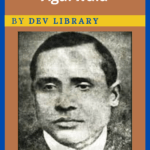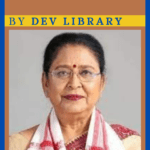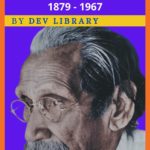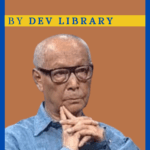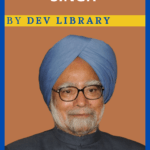Hemchandra Goswami is a man of research in Assamese language, literature and archaeology. Hemchandra Goswami, the possessor of versatility, was a successful administrative officer, historian, archaeologist, journalist, scholar and poet.
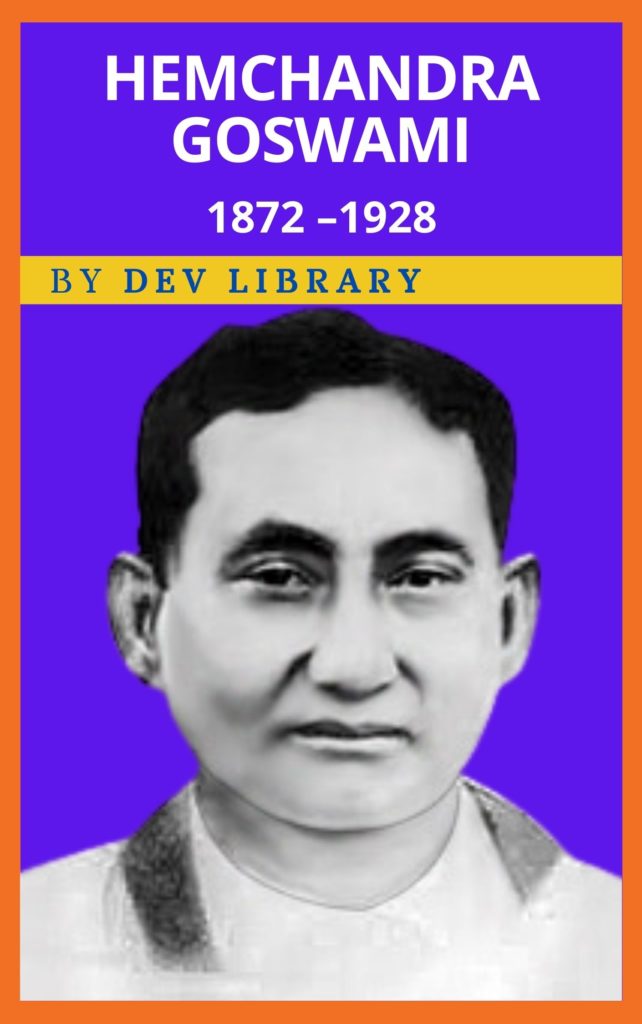
Biography of Hemchandra Goswami
| Name | Hemchandra Goswami[1] |
| Date of Birth | 8 January 1872 |
| Place of Birth | Gaurang Satra, Golaghat |
| Father’s Name | Domrudhar Goswami |
| Mother’s Name | Ghanakanti Devi |
| Education | 1/ Williamson Minor School in Golaghat 2/ Nagaon Government High School 3/ Presidency College, Kolkata |
| Death | May 2, 1928 |
Early life
Hemchandra Goswami was born on January 8,1872 to a Brahmin family of Gaurang Satra in Golaghat. His father’s name was Domrudhar Goswami. Domrudhar Goswami was the authority of Golaghat Gaurang Satra as well as Mouzadar. But unfortunately, when Hemchandra Goswami was just 8 years old, his father Domrudhar Goswami died. This was followed by mother Ghanakanti Devi raising Hemchandra Goswami and his two brothers amid many challenges and problems. Importantly, Hemchandra Goswami was sent to his relative’s house in Nagaon by mother Ghanakanti Devi to pursue schooling. Nagaon was the intellectual heart of Assam at that time. Hemchandra Goswami who introduced talent from a young age various poems were published in the “Assam Bandhu” paper edited by Gunaviram Baruah while studying in school. Poet, historian Suryakumar Bhuyan also highly appreciated these poems of Hemchandra Goswami published in the paper “Assam Bandhu”.
Hemchandra Goswami passed the entrance examination in the first division from Government High School in Nagaon in 1888. Later it was followed by Hem Chandra Goswami in 1890 passed the F. A examination from Calcutta Presidency College.
Also Read: Biography of Krishna Kanta Handique
Professional Life
Hemchandra Goswami joined Sonapur High School as headmaster in 1894. But after serving as headmaster for a few days, He took over as sub deputy collector in 1897 under the efforts of Edward Gate. In 1926 he retired from his career as SDC.
Birth of ‘Junaki’
While studying in Kolkata, The Assamese Language Improvement Sadhini Sabha was established in 1888 with the efforts of Hemchandra Goswami, Chandra Kumar Agarwal and Laxminath Bezbaruah. The mouthpiece of the Assamese Language Improvement Sadhini Sabha was ‘Jonaki’ magazine published in 1889. Lakshminath Bezbaruah, Chandra Kumar Agarwal and Hemchandra Goswami introduced the Assamese nation to the utmost, heritage and pride of Assamese through Jonaki magazine and Assamese nation through literature tried to give language and culture a distinct status. Hemchandra Goswami served as the second editor of Jonaki magazine which was first edited by Chandrakumar Agarwala. Importantly, Hemchandra Goswami’s articles published in ‘The Jonaki’ magazine helped establish that Assamese language is independent of Bengali language.
Hemchandra Goswami as a Poet
Hemchandra Goswami, who has been doing literature since his student days, is one of the notable poets of the first wave of the romantic genre of the Jonaki era. His first collection of poems was published in 1907.The name of this collection of poems is ‘Phool Saki’. The collection of poems titled ‘Phool Saki’ was published by combining poems Assam Bandhu, Jonaki and the poems written later thereafter. Importantly, the poem ‘Priyatama’s Letter’ written by him is the first Sonnet poem in the history of Assamese poetry. This Priyatama letter poem was published in Jonaki magazine. Priyatma’s letter poem therefore sonnet was written in the pattern of Petrarch. Other popular and notable poems written by him are ‘Kako Aru Hiya Nibilaon’, ‘Puwa’, ‘Kakuti’, ‘Bardaisila’ etc. Hemchandra Goswami’s poem ‘Puwa/Morning’ created a new genre in modern poetry. Importantly, this poem ‘Puwa/Morning’ published in the second issue of Jonaki is the second poem of the Assamese romantic era.
Hemchandra Goswami’s poems specifically look at three threads- a) Nature, b) Love and c) Swadesh Prem/Love of Country.
Hemchandra Goswami as an Archeologist and Historian
Hemchandra Goswami’s other identity in parallel with being known as a poet is as an archaeologist and a historian. He discussed the history of Assamese culture under the inspiration of Edward Gate.
Hemchandra Goswami’s important contribution to Assamese literature and caste is the two books “A Descriptive Catalogue of Assamese Manuscript” and “Saneki of Assamese Literature.” These two books played an important role in introducing people from different parts of Assam as well as outside Assam to Assamese language and literature.
In the book ” A Descriptive Catalogue of Assamese Manuscript”, Hem Chandra Goswami has studied 1334 Sanchi Pat books/Pictorial books in Assamese of Ahom and Sanskrit language and contains a narrative list of 233 books and manuscripts. This book was first published in 1930.
Literary Achievements
The book “Saneki of Assamese Literature” edited by Hemchandra Goswami is a rare contribution to Assamese literature. The book, published in seven volumes, was published by Calcutta university in 1929. Importantly, initial work for the book was started from 1918 with the efforts of then Vice Chancellor of Calcutta University Ashutosh Mukherjee.
Edited books
Another notable book edited by Hemchandra Goswami is “Purani Assam Buranji/Old Assam History”. The book was published by the Kamrup Inquiry Committee in 1922. This book contains a long description from the Ahom reign to the death of Gadadhar Singha. The book also contains “various descriptions of the reign of the King of Suhungmung Dihingia Raja“, “Budharaja Pratap Singha”, “A comprehensive description of the reign of Chakradhwaj Singha and the Saraighat war“.
Among these, other books edited by Hem Chandra Goswami are “Suryakhari Daivajya’s Darang Vanshavali” (1917), “Bhattadeva Katha Geeta” (1918), “Hasti Vidyarnama”, “Shri Hastimuktavali”, “Kamratnatantra”, “Ankia Bar Nat”, “Katha Bhagwat”, “Yoginitantra”, etc. In addition to editing ancient books, he also edited a children’s magazine called “Akan” in 1916.
Hemchandra Goswami, who played an important role in rescuing the glorious positives of Assam and presenting them to the world’s doorsteps, played an important role in establishing the Kamrup Inquiry Committee and the Assam State Museum in 1912, to preserve the old tools and books of History. Importantly Hemchandra Goswami served as the president of Kamrup Inquiry committee in 1912.
Hemchandra Goswami also published letters of contact with Ahom kings in the paper ‘Magazine/Alusoni’ under the title “Royal Letters”. Hemchandra Goswami, who laid special emphasis on history studies and archaeological gathering, also played an important role in publishing by deciphering many old royal pods (Inscription).
Importantly, he published an article called Saraighat War on the strategy of Lachit Barphukan, who defeated Mughal soldiers in the Battle of Saraighat on the pages of ‘Usha Magazine’. Hemchandra Goswami also played an important role in deciding that November 24 will be celebrated as Lachit Diwas.
In addition to these works, Hemchandra Goswami, in 1900 under Assam administrator P. R.T Gordan’s initiative played an important role in the publication of Hemchandra Baruah’s ‘Hemkosha’
Others
Hemchandra Goswami also played an important role in the formulation of a book titled ‘Report’ on the historical findings of Assam edited by Sir Edward Gate, an Official of The Administrative Service of India at English Amol and a notable researcher in Assam History. This book was published in 1897. Importantly Hemchandra Goswami wrote the article titled Assamese Periodical Paper Details in the annexure of the book.
Hemchandra Goswami, who wrote, edited, compiled various books on Assamese language literature and history, has also published various magazines like ‘Usha’, ‘Banhi’, ‘Jonaki’ etc. Hemchandra Goswami, who attracted the reader with simple, clear, interesting narrative style, adorned the post of president at the fourth session of the Assam Sahitya Sabha held in Tezpur in 1920.
He also served as president of several rural banks in Nalbari after retiring from government duties.
Conclusion
One of the tri-murtis of the Jonaki era, one of the notable personality, poet, historian, archaeologist Hemchandra Goswami died on May 2, 1928.
Throughout the last decade of the 19th century to the thirties of the 20th century, Hem Chandra Goswami played an important role in the field of literature as well as in the recovery of historical content and historical glorious materials of Assam. The Assamese newly created era created by Jonaki is the tri murti of the Jonaki era, Hem Chandra Goswami’s contribution was impeccable. Hem Chandra Goswami, who has a devoted pursuit of Assamese literature and history, is the pride of Assam and the self-respecting of Assamese. Hem Chandra Goswami’s unartificial love and unblemished love for the homeland is the path for the new generation.
FAQ
1. When and where was Hemchandra Goswami born?
Ans: He was born in 8 January 1872 at Golaghat.
2. What is the name of the first Sonnet poem in the hiatory of Assamese poetry?
Ans: The poem ‘Priyatama’s Letter’ written by Hem Chandra Goswami is the first Sonnet poem in the history of Assamese poetry.
3. Name some his notable works?
Ans: Some of his notable works are- ‘Priyatama’s Letter’, ‘Phool Saki’, ‘Kako Aru Hiya Nibilaon’, ‘Puwa’, ‘Kakuti’, ‘Bardaisila’ etc.
4. When did his first collection of poem published and what is the name of the poem?
Ans: His first collection of poems was published in 1907.The name of this collection of poems is ‘Phool Saki’.
5. Name some of his edited books?
Ans: Some of his edited books are- “Purani Assam Buranji“, “Suryakhari Daivajya’s Darang Vanshavali” (1917), “Bhattadeva Katha Geeta” (1918), “Hasti Vidyarnama”, “Shri Hastimuktavali”, “Kamratnatantra”, “Ankia Bar Nat”, “Katha Bhagwat”, “Yoginitantra”, etc.
6. When did the Assamese Language Improvement Sadhini Sabha was established?
Ans: The Assamese Language Improvement Sadhini Sabha was established in 1888.
7. What is the name of the children’s magazine he edited and when?
Ans: He edited a children’s magazine called “Akan” in 1916.
8. Name some of the magazines published by him?
Ans: Some of the magazines published by him are- ‘Usha’, ‘Banhi’, ‘Jonaki’ etc.
9. When did Goswami declared to celebrate Lachit Diwas?
Ans: He declared November 24 to be celebrated as Lachit Diwas.
10. When did this notable personality and the tri-murti of Jonaki era died?
Ans: One of the tri-murtis of the Jonaki era, one of the notable personality, poet, historian, archaeologist Hemchandra Goswami died on May 2, 1928.

Hi, I’m Dev Kirtonia, Founder & CEO of Dev Library. A website that provides all SCERT, NCERT 3 to 12, and BA, B.com, B.Sc, and Computer Science with Post Graduate Notes & Suggestions, Novel, eBooks, Biography, Quotes, Study Materials, and more.


